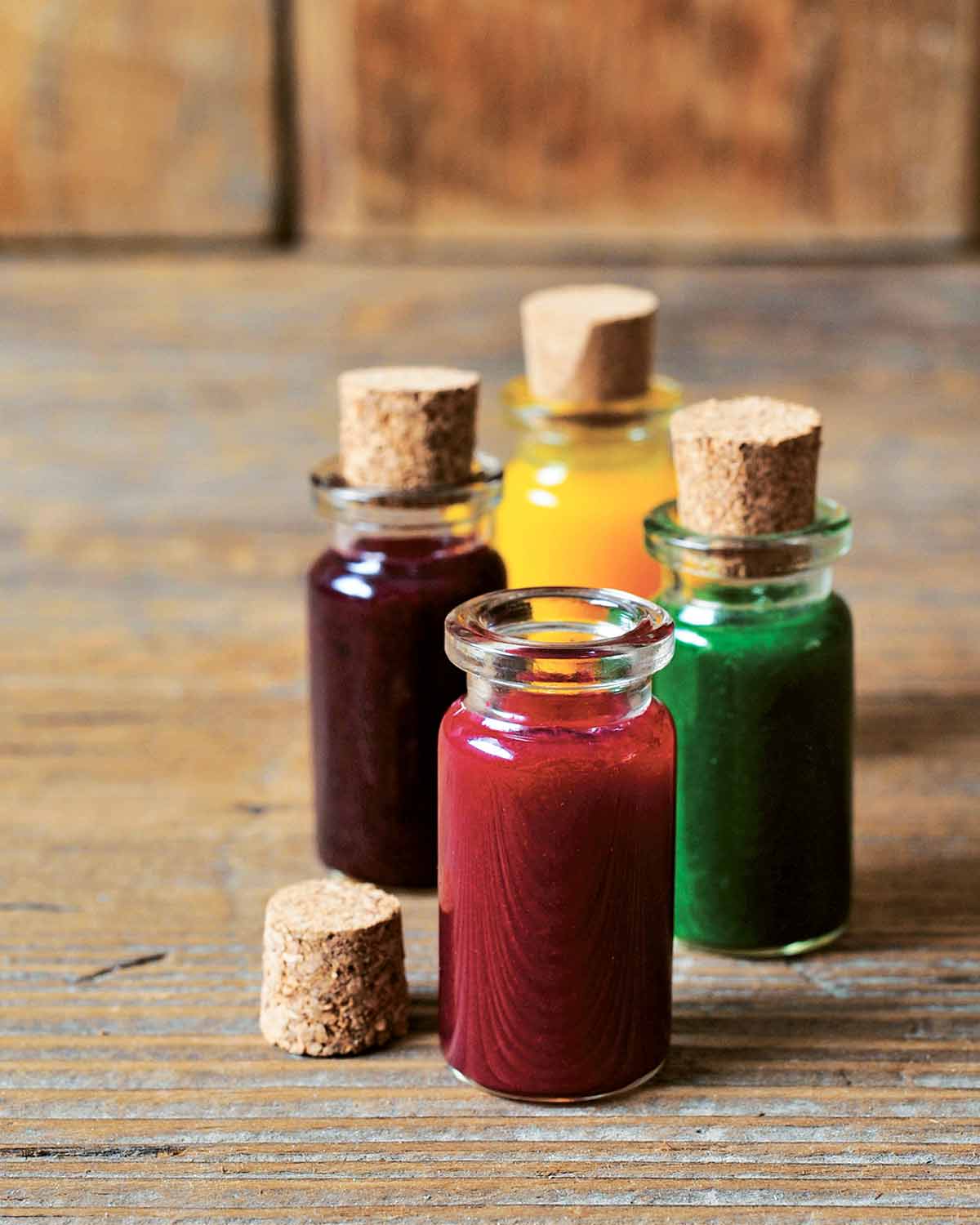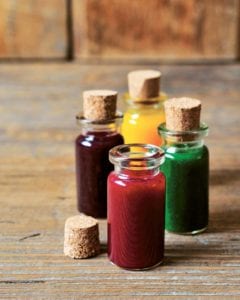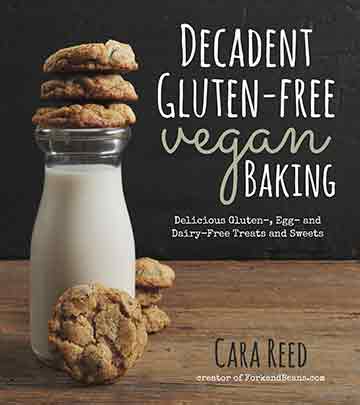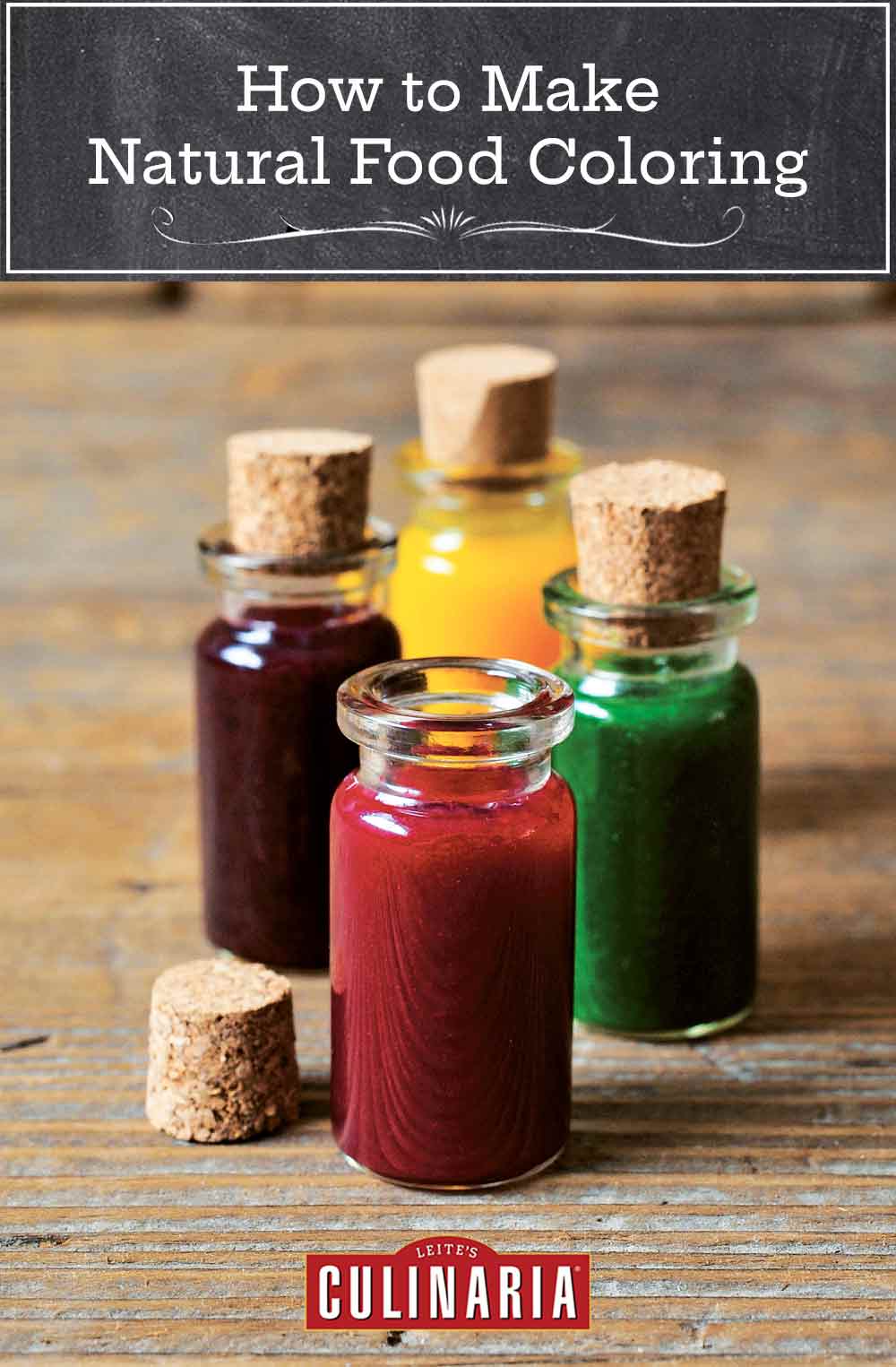
Knowing how to make natural food coloring from scratch is something we’ve been wanting to do for literally years and years and years. And after trying countless different approaches, we finally we have the DIY natural food coloring recipe we’ve been wanting, seeking, and needing. No artificial colors. No preservatives. And no monumental price tag. Just vegetables and fruits and water.–David Leite
Natural Food Coloring FAQs
Keep in mind that when mixed into frostings or icing, natural food coloring will create shades of pastels rather than incredibly vibrant and nearly neon hues. But, on the other hand, these all-natural, one-ingredient colors are kinder and gentler to everyone involved. And there’s something to be said for softness, no?
Yes, to some extent, although it should be minimal. The more food coloring you use, the more noticeable the flavor will be. In some cases, this is desirable, such as with blueberries. However, if the food coloring uses an ingredient that may be off-putting to some, start with a small amount and monitor the flavor.

How To Make Natural Food Coloring
Ingredients
For pink food coloring
- 1/4 cup canned beets, drained
- 1 teaspoon drained beet juice from the can
For yellow food coloring
- 1/4 cup water
- 1/2 teaspoon ground turmeric
For purple food coloring
- 1/4 cup blueberries, fresh or frozen (if frozen, thaw and drain)
- 2 teaspoons water
For green food coloring
- 1 cup spinach, fresh or frozen (if frozen, thaw and drain)
- 3 tablespoons water, plus more as needed
Instructions
- Choose your color below and simply follow the instructions below.
Notes
CHOOSE YOUR COLOR
Pink
In a high-speed blender or food processor, mix the beets and juice together until smooth. Strain if desired. Store in an airtight container for up to 2 weeks in the refrigerator. Add 1 teaspoon to icings, frostings, or batter for starters to impart a pink hue. Add more coloring, if necessary.Yellow
In a small saucepan, boil the water and turmeric for 3 to 5 minutes. Allow to fully cool. Store in an airtight container for up to 2 weeks in the refrigerator. Turmeric can stain, so use a container you don’t mind turning yellow. Add 1 teaspoon to icings, frostings, or batter for starters to impart a yellow hue. Add more coloring, if necessary. [Editor’s Note: Be careful when working with turmeric as it tends to stain whatever it comes in contact with, including countertops and wee fingers.]Purple
In a high-speed blender or food processor, blend the blueberries and water together until smooth. Using a fine-mesh sieve, strain the skins from the mix. Store in an airtight container for up to 2 weeks in the refrigerator. Add 1 teaspoon to icings, frostings, or batter for starters to impart a purple hue. Add more coloring, if necessary.Green
If using fresh spinach, in a small saucepan, boil the spinach in enough water to cover for 5 minutes. Drain, discarding the cooking liquid. If using frozen and thawed spinach, skip to the next step. In a high-speed blender or food processor, blend the spinach and water together until completely smooth. If the mixture clumps or stubbornly refuses to blend, add more water as needed, 1 tablespoon at a time. Strain, if desired, and let cool. Store in an airtight container for up to 2 weeks in the refrigerator. Add 1 teaspoon to icings, frostings or batter for starters to impart a green hue. Add more coloring, if necessary.
Explore More with AI
Nutrition
Nutrition information is automatically calculated, so should only be used as an approximation.
Recipe Testers’ Reviews
These instructions for how to make natural food coloring are easy to follow and everything came together quickly, each one taking less than 5 minutes (if you don’t count the half hour to allow some of the mixtures to cool). Our color testers included a 10-year-old and an 8-year-old. They swirled the final colors into bright white vanilla yogurt and and the results were delightful. Each color is a pretty hue—soft green, lemony yellow, light purple, and a pale pink that got the most enthusiastic chorus of “Ooooh!” and “Ahhhh!”
A few notes: Our blender must not be as powerful as some as the mixtures were a bit chunky. So we ended up straining each. It was easy to do and added maybe another 30 seconds to the overall time. We had fresh beets and fresh turmeric in the house, so we used those, grating each finely. The lemon yellow from the fresh turmeric is especially bright and fresh and satisfying. (Be aware! Turmeric REALLY stains. Make sure everyone is wearing an apron when playing with the colors.) We had a great time with this simple recipe and definitely will make these colors again.
With the problems of artificial colorings in our food chain, this natural food coloring recipe was a pleasure to try. For the pink, I believe you can use fresh beets that have been cooked and use the cooking water. For the purple, the total time, including clean up, was just 5 minutes. For the green, I used fresh spinach.












Hi, I am wondering how long these food colorings last and should I store them in the fridge?
Emily, you can store them in a sealed container in the fridge for up to 2 weeks.
It’s a great recipe. I absolutely love this. It’s so good, yet healthy.
We’re so happy to hear it, Dayne Conn. And they’re surprisingly easy to make–easier than I thought for sure. Do let us know what you use them for, we’d love to know.
Hi, I’m planning to use them for decorating sugar cookies in Icing. Any recommendations on the quantity? Also, do you have more ideas for other colors? Thanks so much
Anila, as with most food coloring, a little goes a long way. Unless you’re trying to get a vibrant frosting, you shouldn’t need a lot. As for other colors, we have heard that dried pea flower makes a bright blue color.